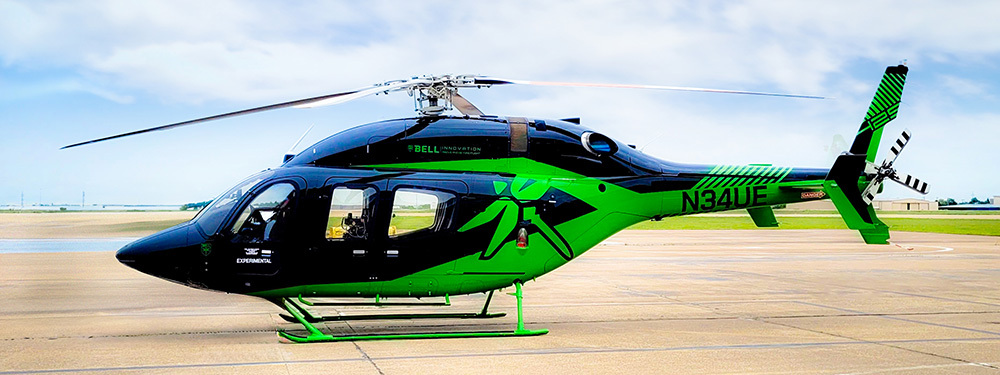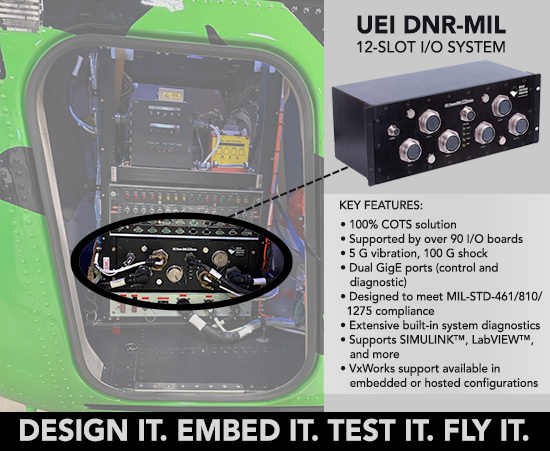
Bell Textron Inc. unveiled its Aircraft Laboratory for Future Autonomy (ALFA) built around the Bell 429 commercial helicopter. Created by Bell's Advanced Programs team, ALFA focuses on testing flight maneuvers using an aircraft safety system and pioneering autonomous fly-by-wire technology.1 This integration marked a significant milestone in advancing autonomous systems for Bell’s commercial aircraft, aiming to enhance safety and ease pilot workload.
UEI partnered with Bell to assist in their model-based development (MBD) of this new autonomous fly-by-wire application. Bell needed a rugged and flexible I/O system capable of running their Simulink model for verification testing on the ground and then for later transfer to inflight testing. The UEI DNR-MIL 12 I/O slot rack system was the ideal solution to accomplish this goal.

The DNR-MIL 12-slot I/O system is built to meet military standards and perform reliably in harsh environments, offering extensive I/O compatibility, dual gigabit Ethernet ports, support for multiple operating systems, and advanced modeling tools such as Simulink for versatile test and verification applications. This system gave Bell the capability to load their Simulink model onto the DNR-MIL to conduct initial autonomous mode fly-by-wire ground tests. Once tests confirmed the safety and functionality of autonomous mode, the UEI hardware was then transferred from the ground test helicopter and integrated into the actual helicopter for flight trials (with Pilot support in cockpit), marking a systematic progression from ground validation to real-world implementation.
UEI is proud to have supported Bell's development of its autonomous fly-by-wire system through the integration of the DNR-MIL 12-slot I/O system. ALFA's innovative design ensures the separation of safety functions from flight controls, allowing for rapid testing of advanced flight technologies without compromising safety. Following its inaugural flight at Bell’s assembly facility in Mirabel, Quebec, Canada, ALFA would then undergo further research at Bell’s Flight Research Center in Fort Worth, Texas.2
